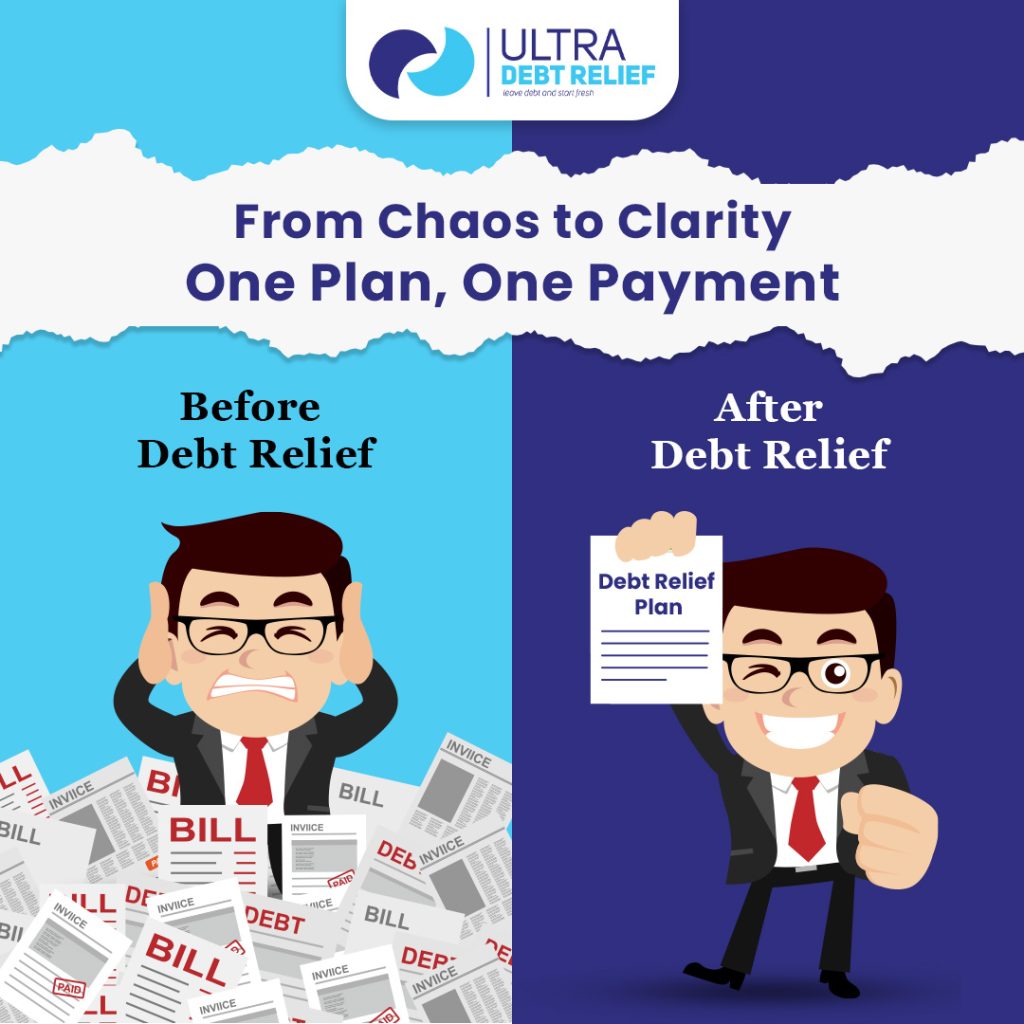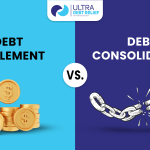How Debt Relief Through Best Debt Relief Programs & Options Takes Place
What is Debt Relief?
How Debt relief works: It works as a financial plan that serves to help people get rid of, rewrite, or settle unpredictable debt. Whether or not this debt is of a credit card, student, medical, or tax burden, debt relief programs exist to provide a realistic solution to the payment or settlement of debt.
A debt consolidation loan is different in that you’re not negotiating anything with your creditors — you’re just bundling debts into one payment that’s due monthly.
Typical debt forgiveness options are:
- Credit counseling – discussion with a nonprofit credit counselor.
- Debt management programs – portion plan of payments.
- Credit counselors – people with experience in discussing sensitive topics.
- Student loan debt elimination and alleviation – government-assisted initiatives.
- Bankruptcy – a final solution that wipes out qualified debts.
How Credit Relief Works
When you get into debt relief program through registration, then the process will normally proceed this way:
- Free Consult – Businesses such as National Debt Relief, Freedom Debt Relief, and Accredited Debt Relief provide free consultation to discuss your debt problem.
- Personalized Plan – A plan that is developed based on your overall debt amount, income, and objectives works to lower your balances or formulate a tractable payment plan.
- Negotiation With Creditors – The debt settlement company negotiates with your creditors to payoff debt for less than the amount borrowed.
- Monthly Payments – Rather than making payments to the creditors directly, you make monthly payments into an exclusive account.
- Settlements – As money is saved, debt is paid off debt by debt through settlements.
This procedure can take anywhere from 24 to 48 months, depending on how much debt you owe and how fast your payment plan is.
Types of Debt Relief Programs
- Credit Card Debt Relief
Credit card debt typically holds a heavy interest rate that qualifies it to qualify for relief programs. There is not actually a credit card debt relief government program, but companies such as National Debt Relief and Freedom Debt Relief will help to lower debt card balances. - Student Loan Debts Relief
Student debt is among the largest debt of its kind in America. Relief programs including Biden’s student debt cancellations and student debt forgiveness debt relief provide ways for qualifying debt holders to reduce payments or eliminate some of their debt. - Tax Debt Relief
If you have debt with the IRS, there are specific tax debt forgiveness programs that can negotiate installment agreements, offers in compromise, or penalty abatements. - Veteran’s Debtor Relief
Veterans’ debt forgiveness initiatives and military hardship aid alternatives offer specialized advantages to service personnel and veterans facing financial responsibilities. - Emergency and Economic Debt Relief Programs
In cases of crisis, including a pandemic or natural disaster, the government or nonprofit organizations can announce emergency debt relaxation schemes and economic debt relaxation schemes.
- National Debt Relief – One of the largest and most known, frequently searched by “Is National Debt Relief legit?” Absolutely, yes, and accredited by the BBB. National Debt Relief reviews note their success and complaints (like “National Debt Relief screwed me”), research thusly.
- Freedom Debt Relief – Recognized by its convenient Freedom Debt Relief login page and excellent customer service. There have been favorable settlement outcomes among Freedom Debt Relief reviews.
- Accredited Debt Relief – A well-received choice. If you’re wondering “Is Accredited Debt Relief legit?”, then yes—it’s accredited and reputable. Accredited Debt Relief reviews frequently commend their customer service.
- First Advantage Debt Relief – Smaller, First Advantage Debt Relief review listings note flexibility to clients.
- American Debt Relief – Another company that plays its part, frequently urged to individuals carrying heavy unsecured debts.
- JG Wentworth Debt Relief – JG Wentworth is well known for its services of offering a structured settlement.
Pros and Cons of Debt Relief
Pros:
- Reduces overall debt incurred
- Stops harassing debtor calls
- Gives a planned plan
- May help prevent bankruptcy
Cons:
- Adverse effect on credit rating during the program
- Possible tax implications of canceled debt
- Fees of debt relief companies
- Creditors Are Not Bound to Pay
National Debt Relief: The Process
- At least $7,500 of unsecured debt is required.
- You stop paying creditors and instead fund a savings account.
- Negotiators renegotiate with creditors to pay off debts, typically 50–70% of the amount.
- Average time to finish: 2–4 years.
- Access is through the National Debt Relief account tracking with their login.
- Relief can be availed of by using the National Debt Relief phone number provided on their website.
Although National Debt Relief reviews are primarily favorable, some customers grumble about fees or that creditors can still continue collections before settlements go through.
Freedom Debt Relief: What to Do
Freedom Debt Relief offers a similar program:
- Login enables customers to monitor progress online.
- The dashboard reveals settlements and remaining balances.
- Customer care is available through the Freedom Debt Relief phone number.
Reviews praise effective client support but highlight that the program is not immediate, with settlements taking time.
Free Government Debt Relief Programs: Legend or Reality?
Many individuals look for government debt forgiveness programs that don’t cost anything, but the truth is no single program exists that will eliminate all personal debt.
However, there are government-supported alternatives:
- Biden student debt relief initiatives.
- UK debt relief orders backed by the government.
- IRS tax debt relief initiatives.
For personal or credit card loans, private enterprises such as Freedom, Accredited, and National Debt Relief remain the top solutions.
Is Debt Relief a Scam?
Common searches include:
- Is National Debt Relief scam?
- Is Freedom Debt Relief reputable?
- Is Accredited Debt Relief reputable?
The reply is yes, they’re reputable companies. But debt relief is not a quick fix. It requires patience, dedication, and trust in the company you choose. Always research reviews, check the Better Business Bureau, and understand fees before enrolling.
Alternatives to Bankruptcy Relief
If debt relief doesn’t feel right, other alternatives include:
- Debt consolidation – merging debts into a single lower-rate debt.
- DIY debt negotiation – contacting creditors yourself.
- Nonprofit credit counseling – free or cheap budgeting advice.
- Bankruptcy – Chapter 7 or Chapter 13 can be the cleanest way out of overwhelming debt.
Selecting the Best Debt Relief Program for You
Ask yourself:
- How much money do you owe?
- Can you handle a short-term setback to your credit?
- Do you want a private company or government program?
- Are you qualified for student debt relief or other special programs?
The ideal debt help businesses will align with your financial requirements and provide transparent and straightforward expectations.
Final Considerations
Debt relief isn’t magic—it’s an organized plan to regain control. Whether using National Debt Relief, Freedom Debt Relief, Accredited Debt Relief, or another program, it’s about understanding how debt relief works, reviewing your options, and committing to the best plan for your life.
If you’re feeling overwhelmed, you’re not alone. Millions of Americans use debt relief every year to pay off debts, restore credit, and start fresh.


